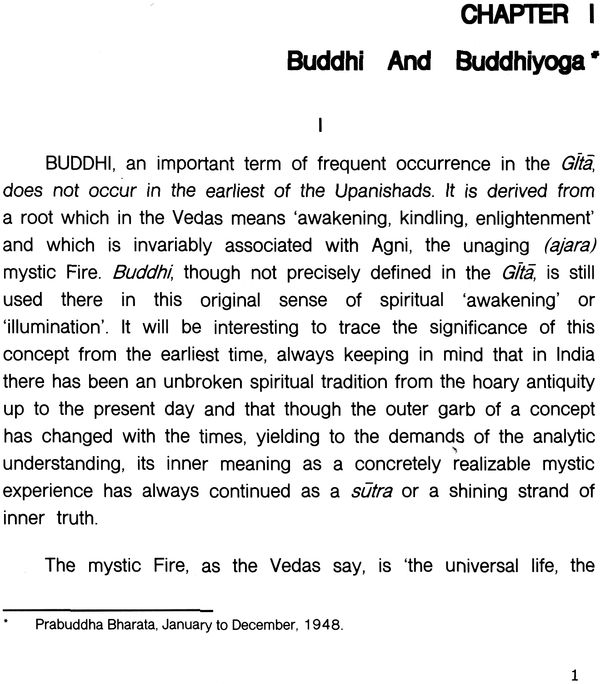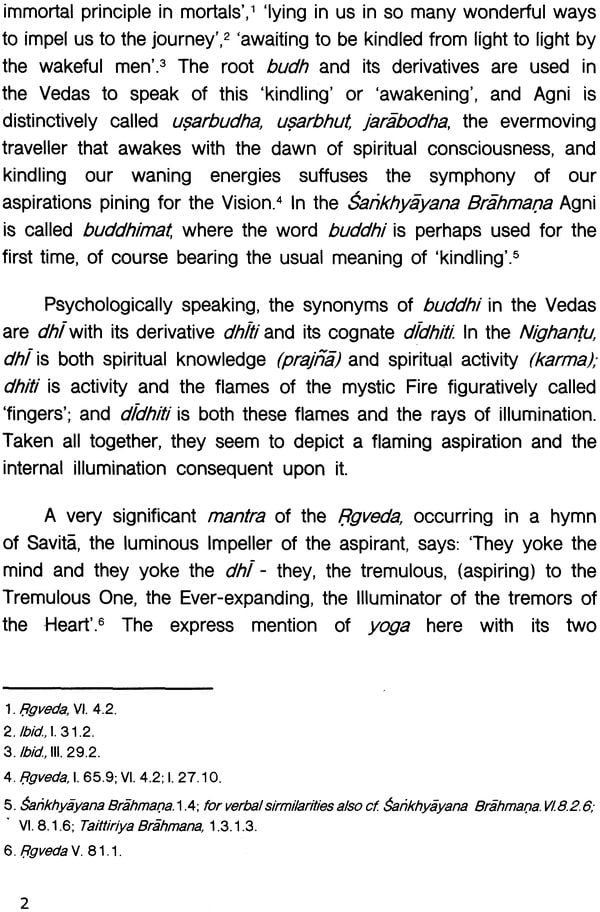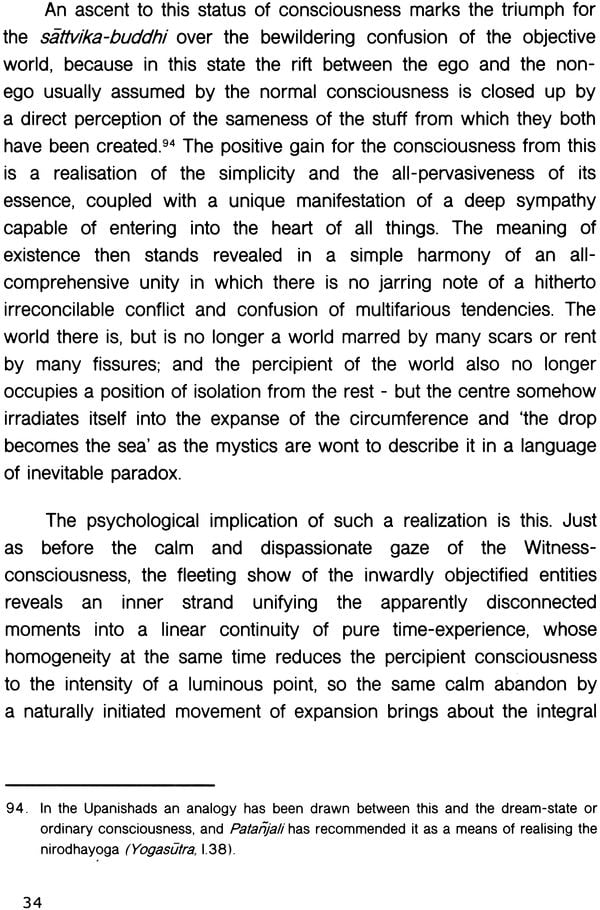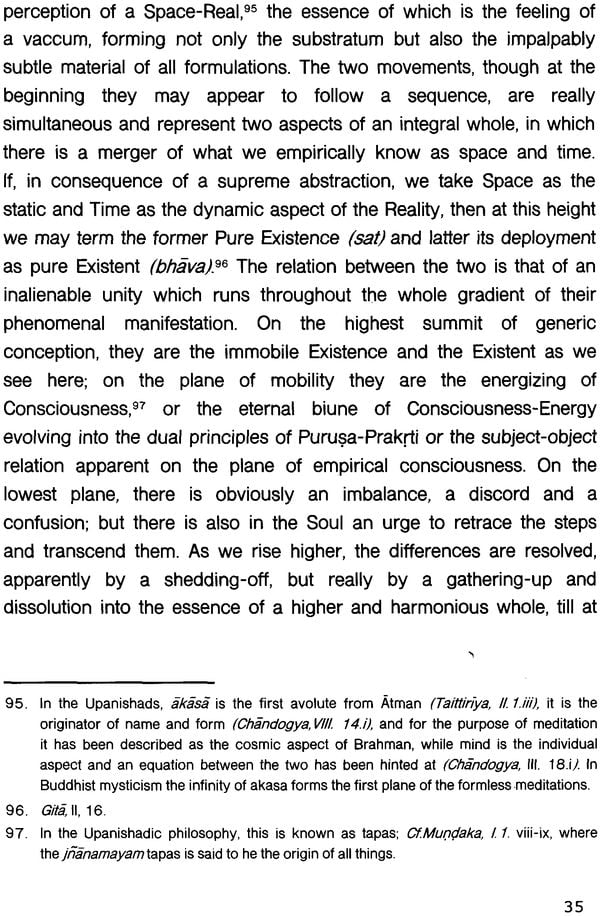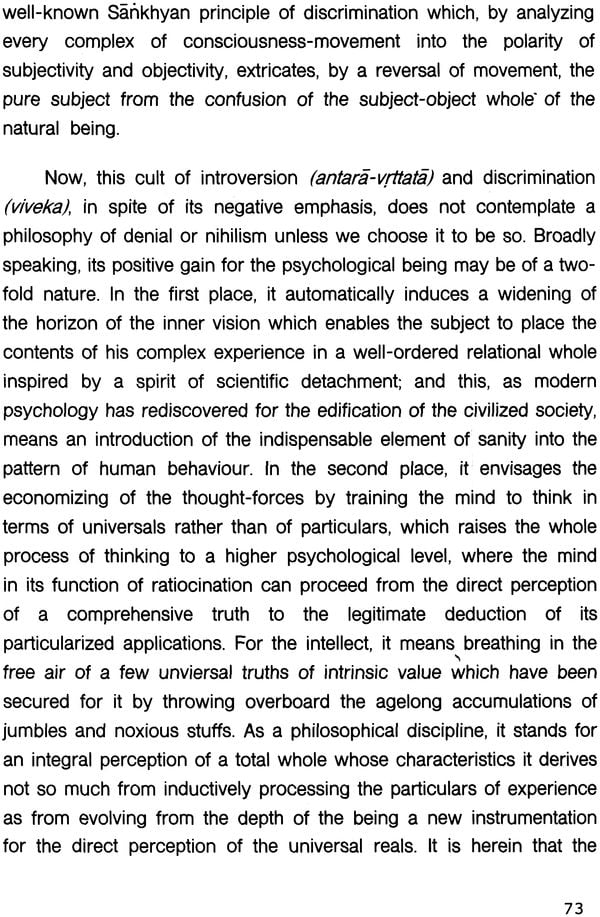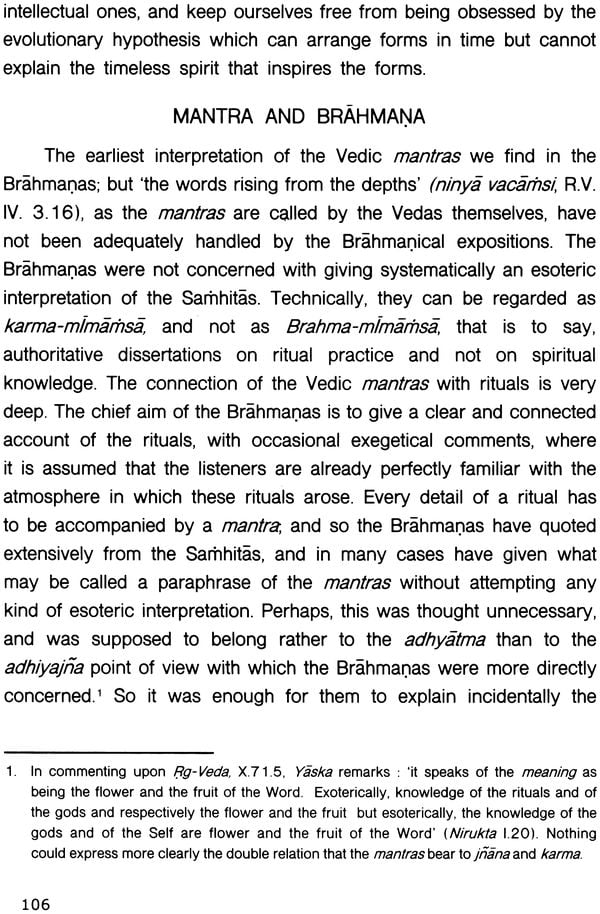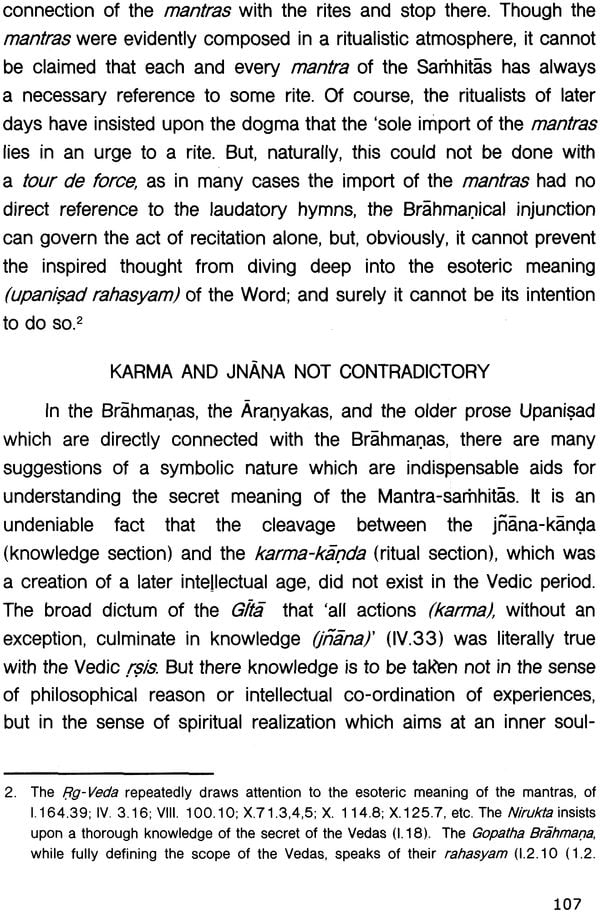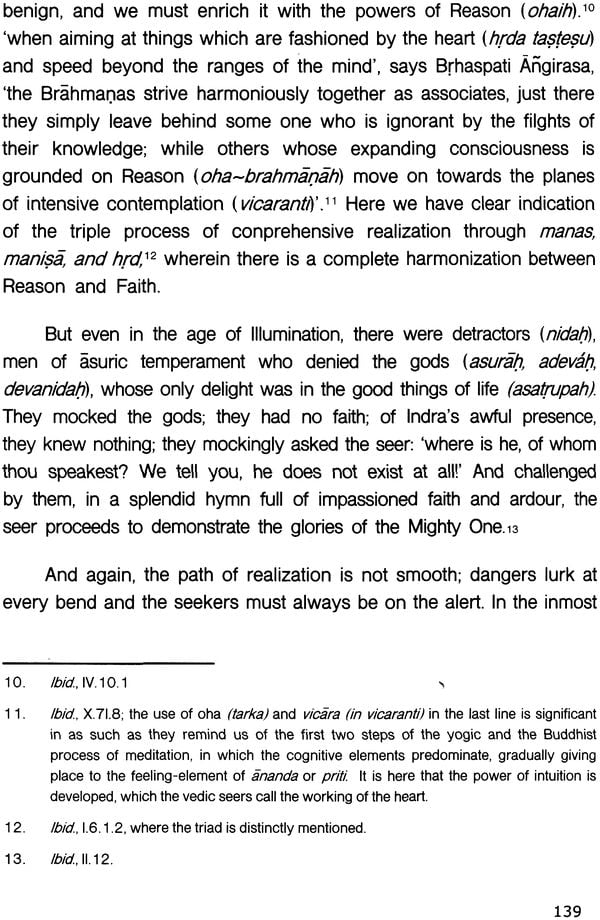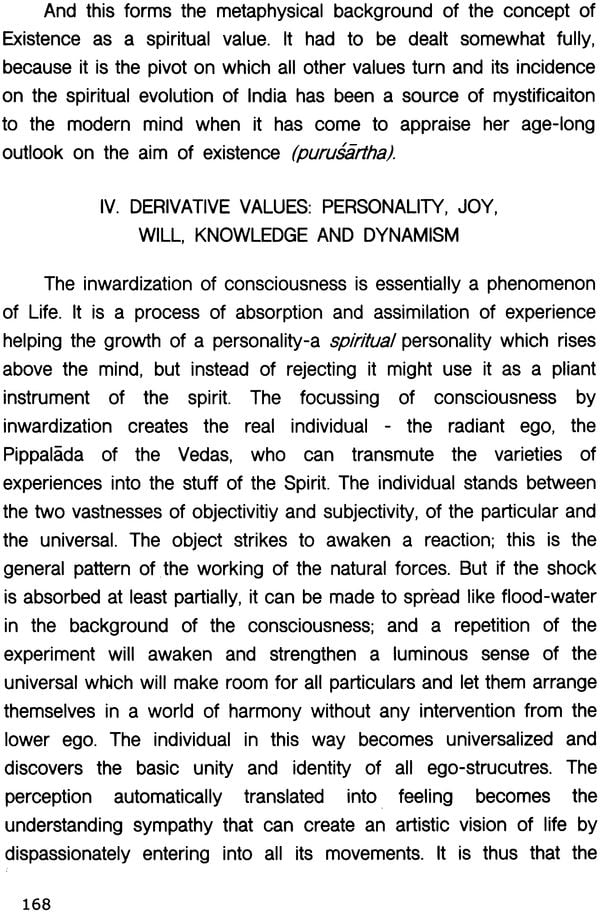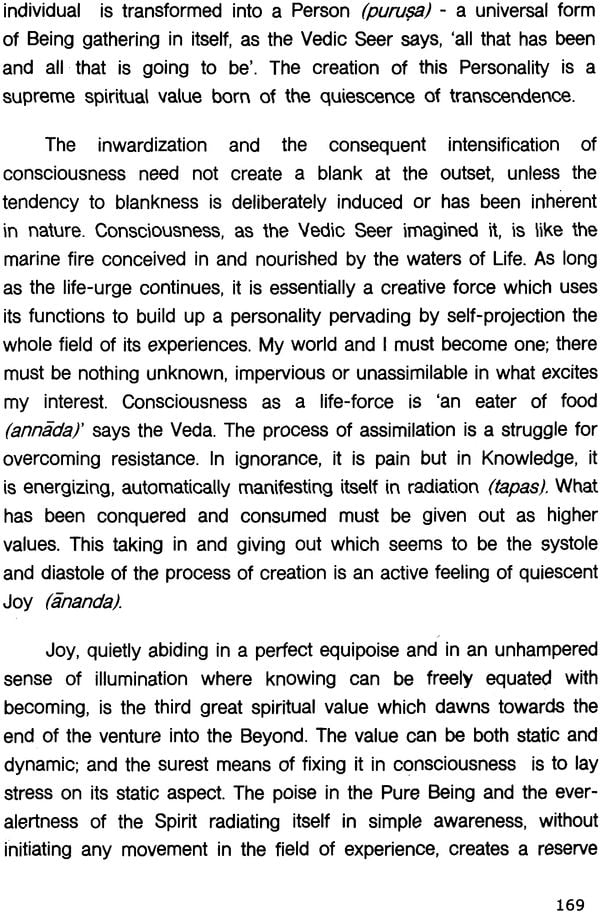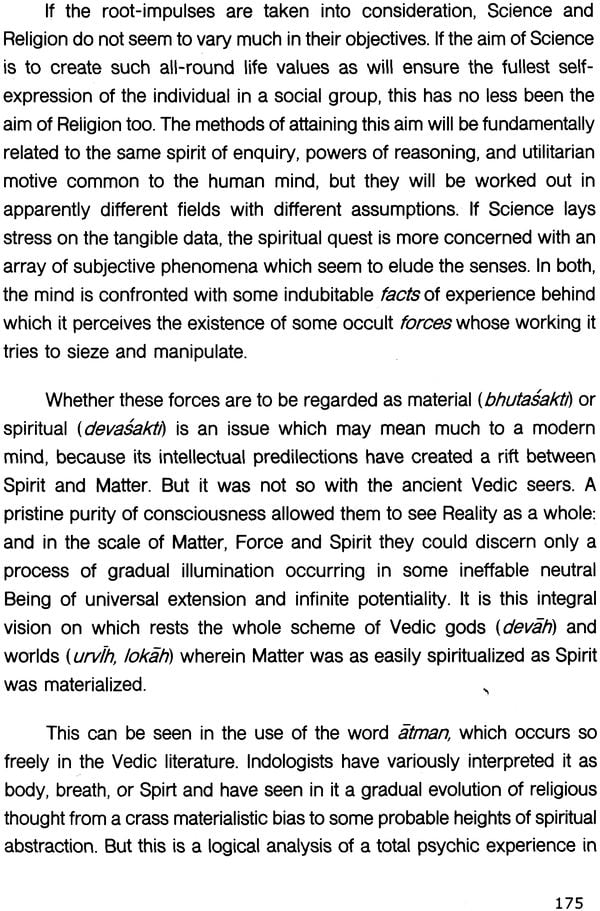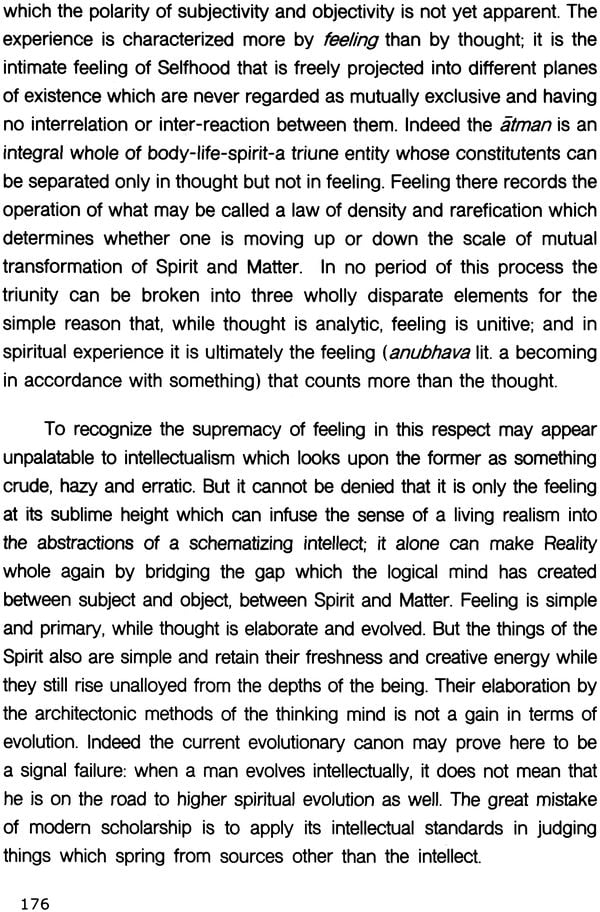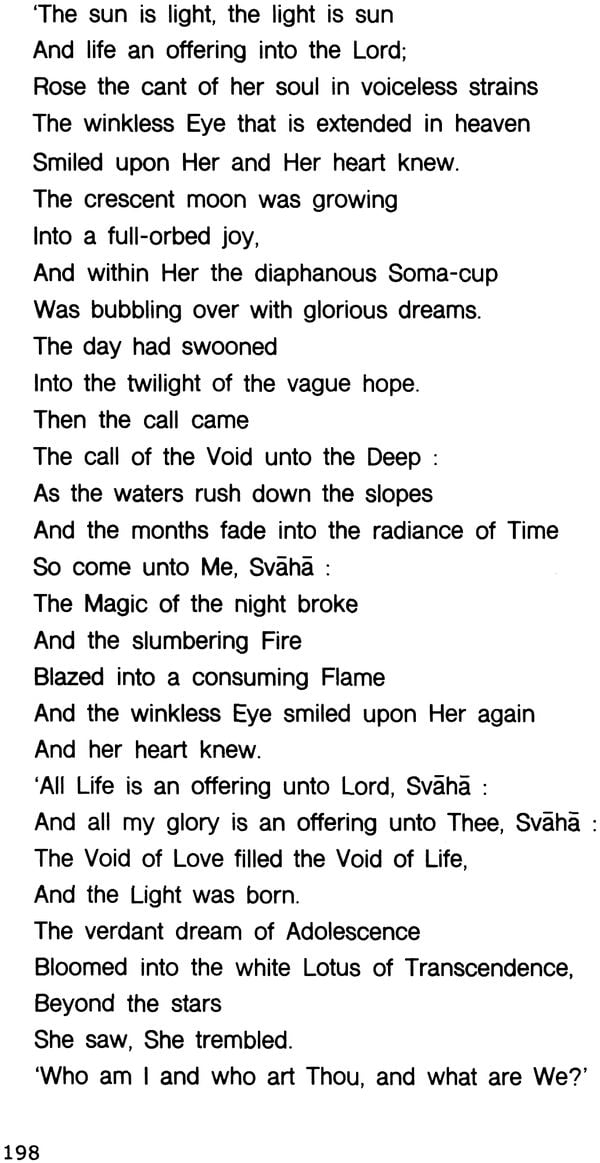
Buddhi Yoga of the Gita and Other Essays
Book Specification
| Item Code: | NAM934 |
| Author: | Sri Anirvan |
| Publisher: | Parampara Publications |
| Language: | English |
| Edition: | 2011 |
| ISBN: | 9788190623940 |
| Pages: | 260 |
| Cover: | Paperback |
| Other Details | 8.5 inch x 8.5 inch |
| Weight | 560 gm |
Book Description
Across our own house in Keyatola was the house of Shri Gautam Dharmpal where my father had taken me a couple of times to sit in the presence of Shri Anirvanji. I was too young to understand what was being said but remember a gentle figure lying on the cot and people sitting around him in reverence. A beautiful silence pervaded. Later Shri Ramswarupji, like a father to me, sent me the 'Buddhiyoga' - of Shri Anirvanji. He wanted me to be introduced to Shri Anirvanji's writings. It was Ramswarupji's way of suggesting seed ideas without elaborating, - and of course never imposing. Shri Anirvanji's book was too profound to be understood by a very young mind - but yet it had all, that would make me go back to it again and again giving clarity to my own particular bent of mind. His writings have since been my source of illumination the one backdrop- touching which all emerging multiplicity of thoughts are transmuted into ONENESS. I pay my obeisance and debt to him in a small way by sharing his words with others through Yak Pararnpara.
To speak about Anirvanji will be ignorance. If whatever, one can understand of him - it will be through his own writings. Such a saintly scholar even in the mighty canvas of the great Indian Tradition is Rare. To read his writing is like sitting in the presence of The Upanishadic Seer who has seen it all. Reading this book presupposes a certain preparation. These books are not guides for practising Yoga, but understanding and articulating Yogic states after intense sadhana.
Sri Anirvan was born on July 8, 1896, in a small town, Mymensingh, now in Bangladesh. Most houses there had thatched roofs, palm, mango and banana trees; beyond, skirting the town, were sprawling rice-fields; nearby, flowed the mighty Brahmaputra. Thus from his infancy, the child imbibed love of nature which lasted throughout his life. Shri Anirvan had almost a botanist’s knowledge of flowers, plants and trees.
The parents belonged to a Bengali, Kayastha family. The father, Raj Chandra Dhar, practised medicine; the mother’s name was Sushila Devi. Both were affectionate and pious. Thus the child grew in an environment of love, harmony and wholesomeness.
At the age of eleven, the boy knew Panini by heart and daily recited a chapter from the Gita. Except for the precocity of the boy, there was nothing unusual in this-it was part of the traditional teaching at home for most boys of his age and caste. There was also a school, part of the newly-established system of education introduced by the British Government in India. Here too, the boy did very well and excelled fellow students.
Even at an early age, Sri Anirvan had a markedly spiritual bent of mind. He was different from the boys of his age. He loved solitude; and even while he was in the company of his playmates, he had his own ‘problems’ and thoughts. One night, when he was only nine, he had a spiritual experience: the sky with its myriad stars entered into him. He felt into a swoon. This experience persisted throughout his life, and Sri Anirvan became a sadhaka of the Void, of freedom, of detachment, all symbolized by the sky.
Even earlier, on another occasion, when he was only seven, he saw a small girl of great beauty. Was it a real object or a spiritual vision? Whatever it was, it must have had a deeper source, for it lived with him throughout his life as a symbol of higher things, as a mystery waiting to be solved, as a benign influence entering into various phases of his sadhana, a force drawing him onwards and upwards, a presiding deity of his life. ‘Her grace was the light of my life for many years,’ Shri Anirvan told his biographer, Madame Lizelle Reymond. Later on in his life, he recognized in this vision ‘the Divine Mother, born of perfect wisdom,’ the Uma Haimavati of the Kenopnisad, Prajna or Atman of the Hindu scriptures.
In the same vein, one day a thought came to him with the force and suddenness of a spiritual realization, that he was free, free from the restrictions of castes and creeds, free in the soul, ‘free like Faqir Chand,’ a wandering, Baul minstrel. All these experiences became part of the fabric of his soul as he grew in age and contemplated on these mysteries.
Shri Anirvan was also destined to meet his Guru, Swami Nigamananda, quite early in his life. He first heard about him from his father; and even before he met him, he accepted him his Guru, seized with the idea of loving him and serving him, and following him as a sanyasin. It does not normally happen this way, but behind this resolve must have been the samskaras of past lives.
One night, when he was sixteen, he left his home to join his Guru also the Guru of his parents. Meanwhile, he had earned a state scholarship. So the Guru sent him back for further studies saying that he would need a scholar like him later on. So for six years, Shri Anirvan was away first in Dhaka and then in Calcutta for higher studies, going to the Ashram of his Guru only during the vacations. Here his academic career was always brilliant; and he secured record marks.
After his studies were over, he went back to his Guru and served him for twelve long years. The Guru’s Ashram, called Assam-Bangiya Saraswata Math, was at Kokilamukh near Jorhat in Assam. It was not an Ashram in the traditional sense of the term. There were no instructions in Yoga or religion. It was all work for the Guru. It was inspired by Swami Vivekananda’s call to active life of labour and service by young men living as brahmacharis and monks. Shishyas here worked on a swampy land, draining it, reclaiming it, cultivating it, digging wells, ditches and channels, cutting down trees, building houses. Shri Anirvan also did his share of the digging, ploughing and woodcutting. After initial labour, the Ashram prospered. The number of inmates increased from four or five in the beginning to fifty in the end. They were growing their own food. They had now also a school, a dispensary, and a monthly journal. Shri Anirvan taught in this school, Rishi Vidyalaya, Sanskril, philosophy and Sankhya, and became its Principal; he also edited the Ashram Journal, Aryadarpana. Among the inmates Shri Anirvan taught, he remembered one in particular with admiration in later life. He was Jugal Kishore who had been a coolie (a disguised name for a slave) on a British tea plantation and who even in the Ashram did the most arduous work. He was a poor scholar of Sankhya and very inarticulate, but he “experienced all the Samadhis of the Sankhya.”
From a brahmachari, Shri Anirvan was initiated into full-fledged sanyasa with a new name, Nirvanananda Sarsawati. But new forces were gathering inside him. His soul was seeking release from the cares of the Ashram life which, as it developed, involved many administrative and other mundane activities. while the Guru wanted him to become the head of the new colony, Shri Anirvan had his own daimon. His soul sought freedom to express itself in its own way-One day in 1930, he left the Ashram. And events proved that he was right. It was a great gain for the cause of Indian religious culture of which he became a great interpreter and exponent. He was now on his own. In due course, he also gave up the saffron clothes of a sanyasin He also changed his name from Nirvanananda to Anirvan, a name by which he was later on known to the larger world. It signified a change of emphasis in approach, philosophy and life-goal. It was also a declaration that he was no longer bound by the vows of sanyasa and that he was free from the ties which even sanyasa forges.
Contents
| I | Introduction by Ram Swarup |
| II | Buddhi And Buddhiyoga |
| III | Vedic Exegesis |
| IV | Veda- Mimamsa |
| V | Veda- Mimamsa: The Background |
| VI | Spiritual Values |
| VII | The Spiritual Quest |
| VIII | New Hopes |
| VIII | Sri Aurobindo and the Mystery of Death |
| IX | Poems and Translations |
| Glossary of Sanskrit Words | |
| Published Works of Sri Anirvan |
Sample Pages
